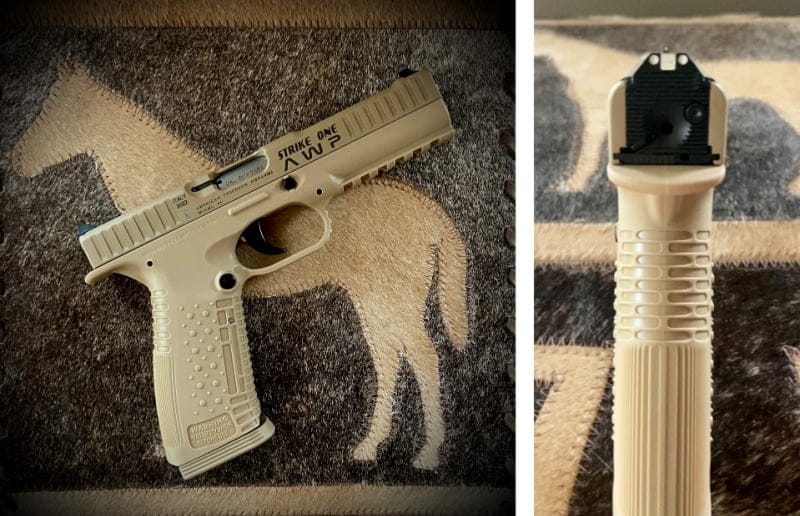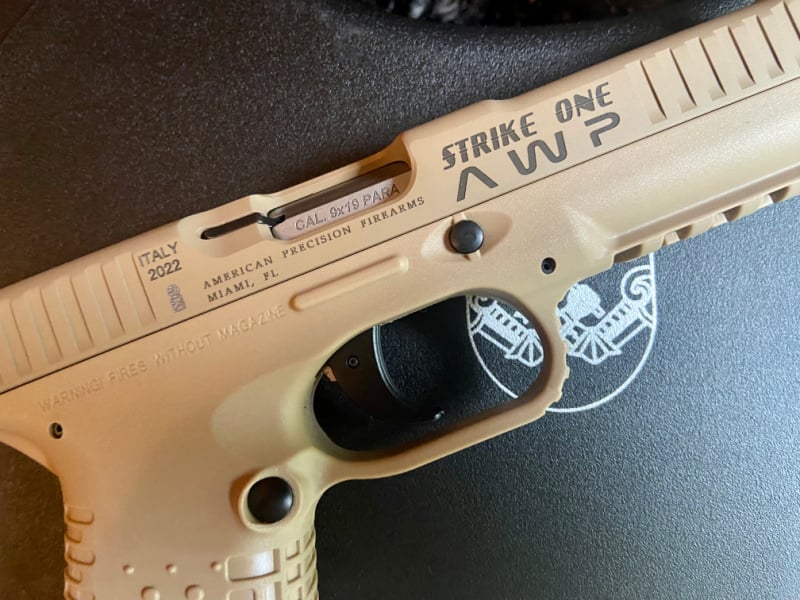Innovation can take many paths, but when it comes to firearms, the areas for development often seem limited. In many ways, we are carrying and shooting designs that are at their core 50 to 100 plus years old.
Some companies have been looking for ways to reduce the felt recoil of handguns by repositioning the bore axis lower toward the grip (points of contact and control). An example of this would be the Chiappa Rhino revolver line which has the bore aligned with the bottom of the cylinder, compared to traditional revolvers that have the barrel aligned with the top of the cylinder. By placing the barrel more directly in line with the shooter’s grip there is less felt recoil, specifically muzzle flip. Although subjective recoil is impacted by multiple factors, I personally find the Chippa Rhino to be a quicker-firing handgun compared to similar-sized traditional revolvers. From my experience shooting the Chiappa Rhino, .357 Magnum is comparable to shooting .38 Special from a traditional revolver.

With advances in polymer designs and machining, a few manufacturers have experimented with lowering the barrel in semi-automatic handguns as well. Most semi-automatics use the Browning design, featuring a tilting barrel which somewhat limits how low the barrel can be brought in comparison to the grip surface. In order to bring the barrel lower, generally the barrel needs to stay fixed through the firing, recoiling, and rechambering process.
Although not the first of such pistols, the Czechoslovakian Laugo Arms’ Alien (2015) has attracted a lot of attention for its low bore axis. Having fired one on several occasions, I can attest to its success at reducing felt recoil. The greatly reduced muzzle flip also makes it much easier to shoot the Alien quickly compared to traditional semi-automatics. The downside is that at over five-thousand U.S. dollars and its relatively large frame, beyond competition and serving as a safe queen, there are not many situations where this gun would be utilized.
A potential answer to the cost and usability issues of the Alien comes from a handgun designed three years earlier (2012), the Italian Arsenal Strike One. Compared to the Alien, the Strike One was designed for regular use. Originally designed as a pistol for the Russian military, it was not adopted, though it has seen some limited use by Russian special forces. The process of the Strike One becoming available to the US market includes multiple distributors and name changes but as of 2023, it is now being distributed by American Precision Firearms.
Although not a discount firearm, the Strike One is currently selling for $700 to $800 US dollars. The combination of being designed as a full-sized carry handgun with a relatively lower price brings low-bore access to a much wider audience of buyers and potential uses.

Arsenal Strike One
The Strike One is a full-sized, double-stacked, striker-fired, polymer semi-automatic pistol. The barrel is 5” in length and the overall length of the gun is 7.97” long, 5.62” high, and 1.37” wide. It comes with traditional 3-dot sights and two 17-round 9mm magazines and the unloaded weight is 1 lb. 6 oz.
Of course, the biggest selling point is the low barrel (grip top to barrel center of .47” compared to .79-1.34” in similar firearms from Glock, H&K, and Berretta). This lower barrel design, matched with the barrel’s straight back movement (compared to tilting), results in a noticeable reduction in muzzle flip and felt recoil. The result is less time between each shot fired and the sights coming back into alignment on a target. In simple terms, the lower bore allows for faster shooting.

The overall grip angle and surface feel good to me and are well-suited for my hands and grip. It should be noted, I prefer larger guns. I grew up shooting 1911s. I mainly carrying the Glock 17 and IWI Masada today. Presenting the gun from low ready, I get a consistent sight picture and the gun feels well balanced. The slide lock is on the left side for dominant right-handed thumb operation. Though easy to find and use, it is stiff especially if you are wanting to use it as a slide release.
The magazine catch can be converted for left-handed operation and, like the slide lock, is relatively stiff out of the box. It is a round button recessed into the frame and takes a deliberate push with the thumb to release the magazine. I am sure this motion can be learned, but I found during speed loading, that I did not always manage to place my thumb into the right position to fully depress the button to get the magazine to drop. Once properly depressed the magazine reliably dropped from the magazine well.
The gun comes with an under-barrel rail for mounting lights or lasers and the back plate features an easy-to-see metal ‘chamber loaded’ indicator. The slide features front and back serrations and though I did not immediately notice, does require a little more effort than some similar guns to rack the slide.

Let’s get into how it shoots!
The entire solid trigger shoe initially pivots downward as the trigger finger first starts to depress the trigger. This pivot allows the trigger to continue being pressed. Without the pivot, the trigger will not move, and the gun will not fire. Once pivoted, the trigger (~ 5-pound pull) moves quickly to the break. The break is before the final resting place of the fully depressed trigger (about another 1/8”).
Reset is consistently at the start of the pivot. When operating this trigger at speed, it is consistent in break and reset. I was quite impressed. When slowing the process down to a very slow trigger press it is a little more clunky, with a little grit from the first safety pivot to hitting the wall before the break. Additionally, you do have to apply a little more force right before the break (firing) of the trigger. My honest appraisal is that this is a great trigger for a striker-fired polymer pistol if you are already well experienced ‘running a trigger’ at speed. However, it might not be the best trigger to learn the fundamentals of trigger press on.

For my initial tests, I ran 500 Blazer Brass rounds through this pistol with no issues feeding, chambering, or firing. I also ran some other brands of 9mm through to see if the reliability changed including Sellier & Bellot, ZQI, and Speer Gold Dot. Though only shooting 20-50 rounds of each of these the Strike One chewed through all the ammo tested without issue. Overall, I did experience lower felt recoil and found my flash sight picture returning more quickly compared to higher-bore guns. The overall difference was small but noticeable and it was easy to engage targets with multiple rounds quickly at defensive distances.
Would I recommend the Arsenal Strike One?
Depends on the shooter, what they are looking for, and what they want to use it for. I think if your primary concern is reducing recoil on a solid full-sized pistol and you are an experienced shooter, the Strike One is well worth checking out. If you are a newer shooter, but not overly concerned with physically manipulating the controls and you are looking for something different, again I think it is worth giving it a try. If you are a shooter looking to focus on your fundamentals and/or may struggle with stiffer functions (magazine release, slide lock, racking the slide) there are probably better guns on the market for you to look at.


